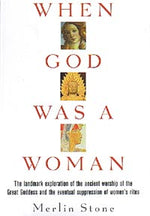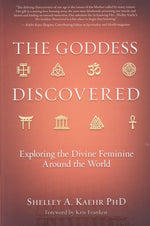Goddess Spirituality for the 21st Century
Karen Charboneau HarrisonShare
© Copyright 2023 Karen Charboneau-Harrison, All Rights Reserved.
Over the last 50 years we have seen a re-emergence of interest and dedication to the Goddess whether in the form of Wicca, the re-emphasis on Mary in the Catholic religion or in the eclectic blending of tradition and liturgy spontaneously created by people who are expressing their own personal connections to the Feminine Divine. What do these spiritual expressions share that is commonly known as Goddess Spirituality?
First and foremost is a reverence for the feminine in the Divine, the recognition that the Goddess is the ultimate creative power of the Universe. Goddess religion is not necessarily exclusive to only the feminine expression of the divine, however. Many individuals and groups also feel that balance is better achieved by creating a system which acknowledges and honors both Masculine and Feminine divine energies.
Secondly, personal connections with the Divine are emphasized rather than dependence on a priest or minister to create or interpret those connections. Intuition and creative ritual are used to connect the individual in a personal relationship with Goddess or the Divine. Holy writ is not a component of the Goddess path, but instead each human being finds their own inner connection with the Divine Feminine.
Another major component of Goddess Spirituality is that our Mother Planet is a physical representative of universal divine power to be honored, revered and preserved. Ecology and planet saving ethics are important principles to Goddess followers. Goddess Spirituality often also honors our special connections and responsibilities with all life, including our animal brothers and sisters.
The roots of Goddess Spirituality begin with our Paleolithic ancestors, from around 75,000 to 40,000 BCE (before common era) when art, religion and magick were born. We can see in the cave paintings which depict tribal magicks and life events the way that these thoughts and activities emerged together. Our ancestors were initially hunters and gatherers, meaning that they were traveling nomads following the seasons and the herds. As they followed the migration of the herds, the tribes gathered roots, fruits, vegetables and nuts which were in season. Animals from the herds were hunted as well, providing food, clothing and tools for the tribes.
Over time the people noticed the patterns of travel and migration that they pursued in following the herds and at what times of the seasons the various fruits and vegetables were ripe and ready to eat. Many continued their nomadic existence, but some began to settle down in areas that were particularly fertile and that the herds visited often. It was in these areas that we see the cave paintings depicting the hunt and this was where the conscious formation of art, magick and religion converged.
The tribes didn’t have the luxury we enjoy today of popping down to the local grocery store to pick up nicely packaged cuts of meat and fresh produce. They were completely dependent on themselves and the kindness of the Gods for their survival. Without all of the artificial stimulation and distraction that we endure today in the Western world, our ancestors were better equipped to listen to their quiet inner voice of intuition, pay attention to their dreams, follow the patterns of energy of the stars and planets and use their own powers of concentration to try to influence the world around them for their continued existence. They used what we call now ‘sympathetic magick’ which is when you take ritualized actions that act out what you wish to manifest to influence the energies of the universe. This raising of focused energy helps to actualize those ritualized actions on the physical plane. Our ancestors painted dramatic, active pictures on the walls of caves showing the hunt: large herds of strong animals running with the hunters of the tribe following for the kill which would sustain the lives of their tribe mates. Then, in the flickering light of a fire in the cave, they danced the painting into life and reality, focusing on the success of the hunt and raising energy to see it manifest. And, we know from excavations found in springs in the area, they then made gifts of thanks to the Gods and offerings to the Gods for the success they found.
We also know that our ancestors found personal relationships with the Divine by the type of artifacts found in the excavations. For example, in Catal Huyuk (an area in modern Turkey), archaeologists have found over 70,000 small personal sized Goddess figures. If you follow archeology you probably have noticed that actually all areas of the world where there have been excavations have shown prominent signs of Goddess worship (art, statuary, burial customs) up until around 3000 years ago.
Even after monotheism took hold, there were still pockets of Goddess worship on the British Isles as well as the European continent (usually expressions of what we call Wicca today), but followed secretly because of events such as the Witch Trials in England, Scotland, Ireland and Germany. These practices stayed underground completely until 1954 when Gerald Gardner published his first book called The Meaning of Witchcraft. Then in the 1960’s a complete revolution began – civil rights, women’s rights, animal rights and environmental concerns all sparked renewed interest in Goddess Religions because the basic foundations of these movements reflected Goddess Spirituality values: egalitarianism, respect for the earth, the view that animals were not less valuable than people, our need to protect our planet as well as the need to balance the energies between male and female.
Many people practice their spirituality by themselves in a solitary fashion, but there are also thousands of groups across the United States and Europe. Some are women-only groups, and some have both men and women worshipping together. The resurgence of interest and practice in Wicca and Paganism has served as the foundation of the Goddess Spirituality movement but it is not limited to only those traditions. All professions, all walks of life and income brackets are represented in the adherents. In the last 40 years or so magazines devoted to Goddess Spirituality and well as hundreds of great books have been published.
Developing your own personal relationship with the Divine may be the foundation of Goddess Spirituality. To begin you can choose a Goddess or aspect of the Goddess which draws or fascinates you. Study and learn about this Goddess by reading, meditation, writing songs, poetry, creating dance or performing ritual focusing on connecting with this Goddess. Some people or groups acknowledge Goddess energy exclusively in their spiritual practices, but She is not a jealous Goddess. Goddess worship can be incorporated with any existing spiritual practice. For example, Christians could devote some prayers and meditations to Mary. People of the Jewish faith could look into the Divine Bride, the Shekinah, who is the consort of God.
Goddess Spirituality is truly a path for the 21st century. As a people we must now consider our Mother Earth’s environmental needs as we can see very clearing from our global perspective the interconnected web of being. All personal deeds and collective actions of groups and governments are interconnected with the lives and actions of every being that lives and breathes upon Mother Earth. We need to balance male/female energies and lives, find a balance and respect between the secular and the Divine and between our conscious lives and actions with our unconscious world. When we develop and explore our personal relationship with Divine, we begin to live as if we are truly the children of the Goddess.
| Recommended Products | |
 When God Was a Woman When God Was a Woman |
 Goddess Discovered Goddess Discovered |
 Goddesses Among Us Goddesses Among Us |
 Goddess Power Oracle Goddess Power Oracle |
